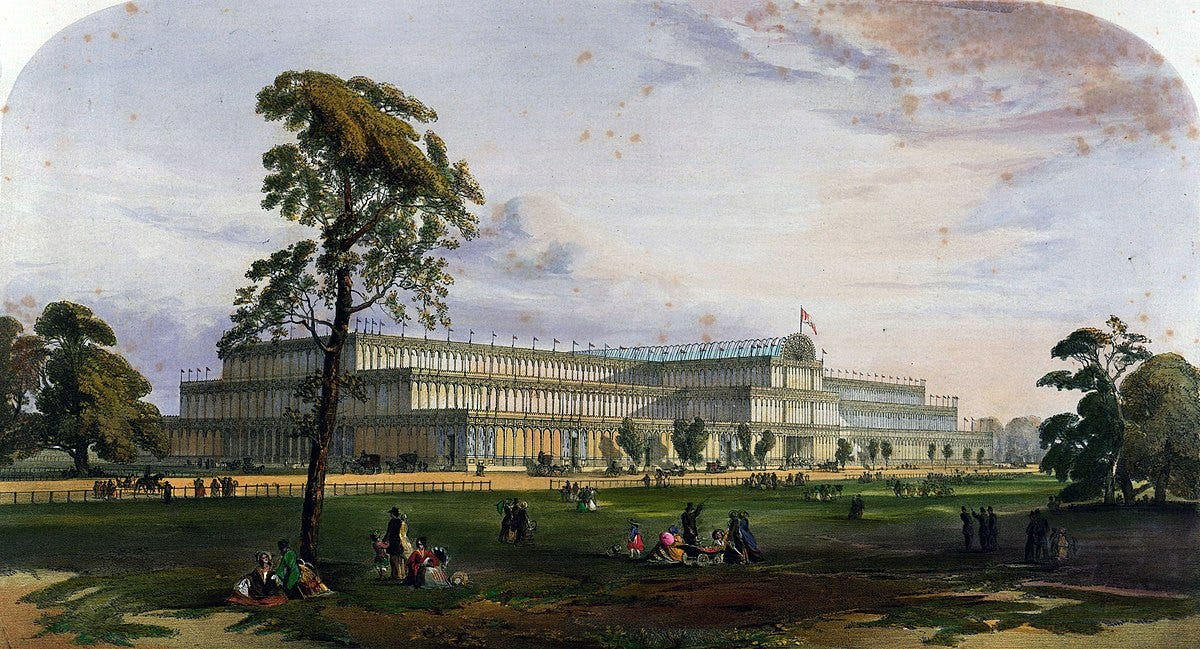London's Crystal Palace Lives! (In my Imagination, at Least)
Not far from where we're living in the U.K. are remnants of this fantastic piece of Victorian-era architecture.
Michael and I are currently living in Croydon, a borough just south of London, and I recently noticed on a map we aren’t far from something called Crystal Palace Park.
Hold on, I thought. That’s not the Crystal Palace, is it?
The Crystal Palace was, of course, that marvel of Victorian-era architecture, a massive glass and steel structure built for something called the Great Exhibition in 1851 — the first world’s fair. It had almost a million square feet of space showcasing what were then some of the world’s greatest scientific and technological marvels.
The Crystal Palace was:
The largest glass building ever constructed — by far! — using innovative new methods to assemble the recent technological developments of “sheet glass” and “cast plate glass.”
Built around three massive, existing trees, which ended up being one of the structure’s most striking features, essentially turning it into a giant greenhouse.
Lit by natural daylight during the day, astonishing visitors — and also lowering the structure’s running costs.
Built in a mere five months, thanks to an ingenious design.
The location of the world’s first pay toilets, which cost a penny, and originated the British expression “spend a penny” (which means “go to the bathroom”).
The display site of a prototype for an early fax machine; the first voting machine; and the world’s largest known diamond.
I’m a big Jules Verne and steampunk fan, and the mere words “Crystal Palace” send my imagination into absolute overdrive.
But wasn’t the Crystal Palace located in Hyde Park in Central London? And wasn’t it, like, gone?
In fact, in 1854, the entire structure was moved and rebuilt (to an even larger size) in South London. This much-publicized event also included the unveiling of the Crystal Palace Dinosaurs — a collection of statues of various extinct animals, inaccurate by a modern understanding of science but still a fascinating look at the knowledge of the time.
Eventually, two new rail stations were built by competing companies (both called “Crystal Palace,” which probably made rendezvousing with friends a delight).
For two months in 1864, there was even an experimental underground “pneumatic railway” — powered, in part, by vacuum suction — that ran near the reconstructed Crystal Palace.
Meanwhile, the interior of the new Crystal Palace now included more gardens, along with a large number of fountains, pools, and other water displays, with a total of 12,000 different jets. It was all powered by two water towers, one on each end of the building.
But the relocation and enlargement of the Crystal Palace was ultimately a failure.
Keep reading with a 7-day free trial
Subscribe to Brent and Michael Are Going Places to keep reading this post and get 7 days of free access to the full post archives.





